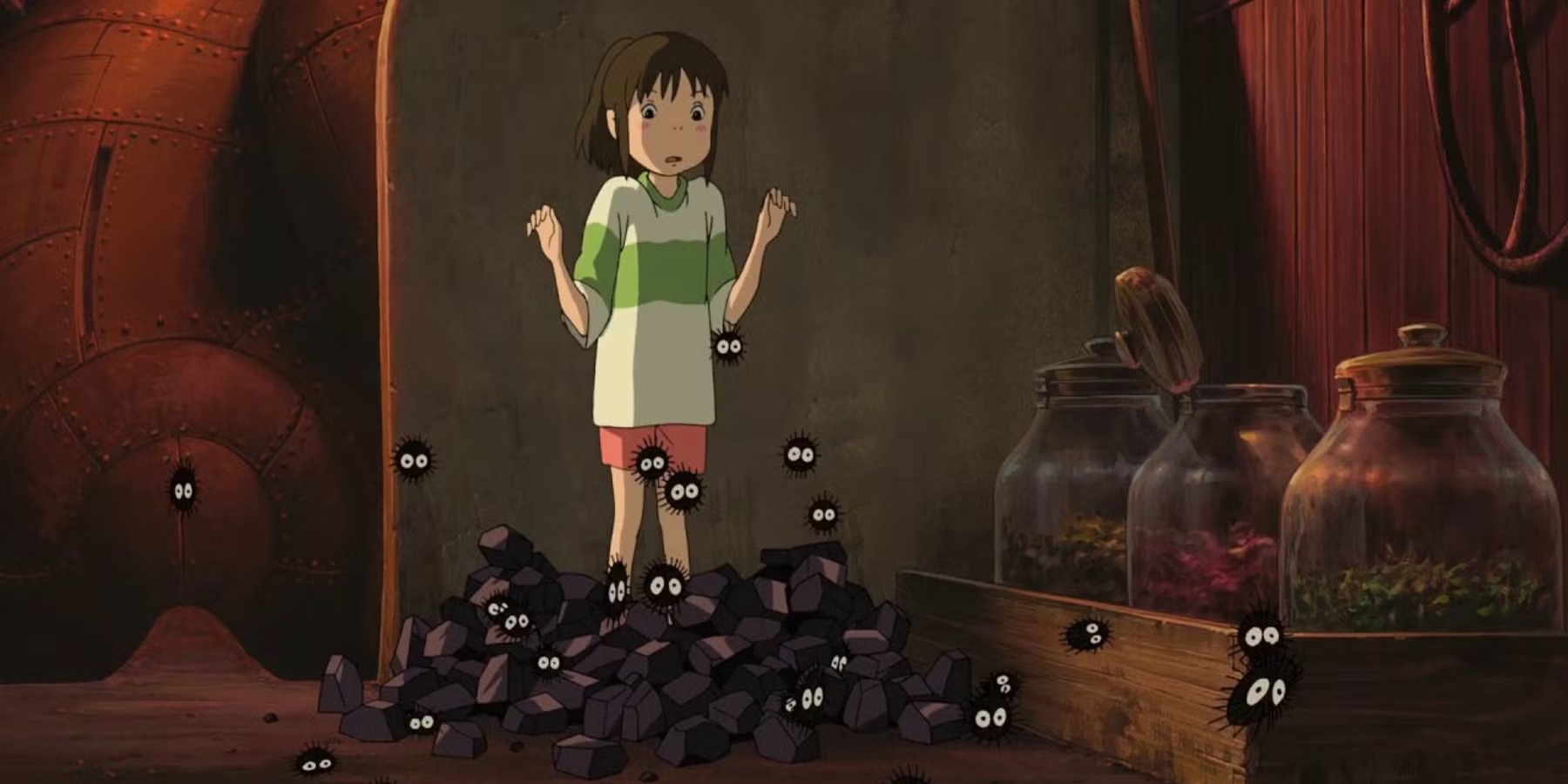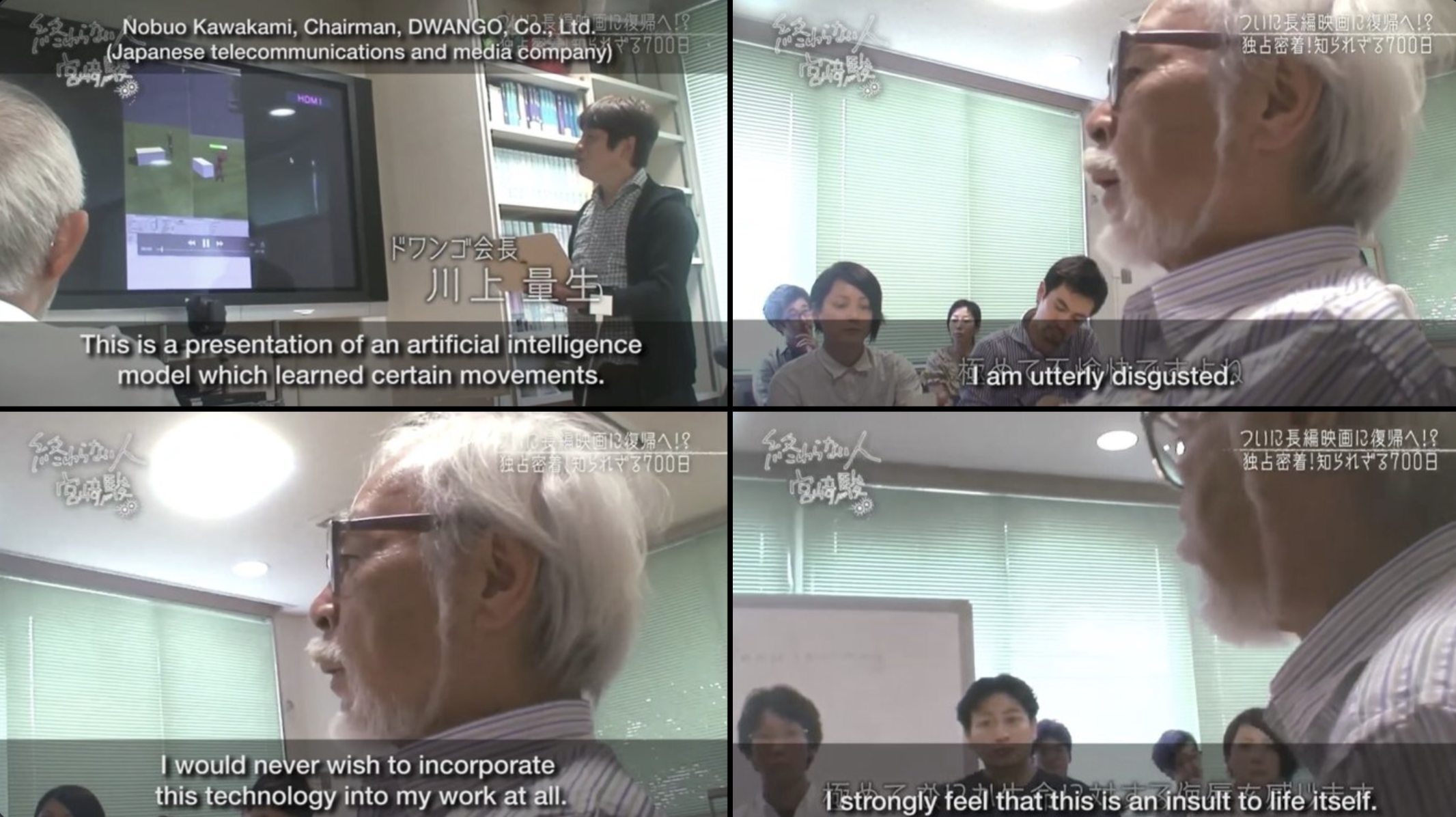
Hayao Miyazaki is my favorite artist and director. Though I haven’t watched his entire filmography, every moment of the films I have seen captivates me. In “Spirited Away,” the dust ball creatures exemplify his artistic prowess—his ability to infuse life into the mundane through his drawings. His work is truly a labor of love. Every scene in his animated films is hand-drawn and painted with watercolor.
To put this dedication in perspective: a single 4 second crowd scene from Studio Ghibli required 1 year and 3 months to complete. At 24 frames per second, that’s 96 images—roughly 6.4 images per month or one-third of an image in an eight-hour workday. At this rate, animators would spend a decade creating just 28.8 seconds of footage. This extraordinary commitment to craft has established Miyazaki’s work as iconic for decades.
Yet as technologies like GPT-4o image generation and and “Ghibli-style” AI art taking the internet by storm, I can’t help wondering about the future. When anyone can transform an image into a Ghibli-esque cartoon nearly indistinguishable from Miyazaki’s hand-drawn work, we must reconsider what constitutes true craftsmanship and whether we can appreciate his art in the same way.
Miyazaki himself once expressed after viewing AI generated animations: “I am utterly disgusted. I would never wish to incorporate this technology into my work at all. I strongly feel this is an insult to life itself.” However, I hesitate to apply this statement too broadly, as it was made under different circumstances—specifically in response to Dwango AI Lab’s demonstration of a 3D zombie animation of substantially lower quality than today’s AI art. Objectively speaking, current AI-generated Ghibli-style images demonstrate impressive technical quality, yet for longtime fans, they lack the same emotional resonance.

The genius of Ghibli’s work transcends time. Released in 1997, “Princess Mononoke” explores humanity’s complex relationship with nature through a meticulously crafted world. With a budget of 2.35 billion yen—making it the most expensive animated film of its era—the movie was created just before the digital animation revolution. Approximately 144,000 cells were hand-drawn to build its vision of Muromachi-era feudal Japan. The result was a timeless masterpiece that represented more than a decade of thoughtful development in plot, character, and animation. It was the pinnacle of its time and remains so today.
As we process the technological shift that now enables machines to replicate human art at scale, we must consider how this new dynamic will shape creativity’s future. When the marginal cost of producing high-quality work approaches zero, what defines creativity? Can creative works be protected, or can anyone replicate a piece after merely seeing it? In an era where everyday users generate sophisticated content with minimal input, how do we distinguish truly exceptional work?
While I don’t have definitive answers, I believe our appreciation for content will evolve—perhaps valuing human-created work more highly or discovering new experiences through previously inconceivable creative expressions. Copyright laws, though often inadequate and slow to adapt, will eventually catch up to protect original works and incentivize innovation. On a positive note, creativity will no longer be limited to those with technical artistic skills. It may ultimately center on taste and the ability to understand and abstract experiences that evoke universal empathy—expressions of our collective human experience.
However, as creation costs approach zero, we risk the collapse of our collective imagination while maintaining only the illusion of creativity. The dynamic we’ve observed in content consumption—preferring cheap, easy, addictive material—now extends to creation. Why face the challenging reality of making something yourself when you can skip to the result? Our aesthetics might become constrained by AI models’ training data, reducing creativity to mere copying and merging of established works. We risk being left with nothing but juxtaposition.
The difficult process of creating and thinking deeply is where genuine ideas emerge. Technology evolves rapidly; humans do not. Even in the AI age, there remains space for quality and discernment. The labor, patience, and intention behind Miyazaki’s work embody values that transcend technological convenience—values we would be wise to preserve, even as our creative tools transform.
References: https://openai.com/index/introducing-4o-image-generation/, https://www.reddit.com/r/nextfuckinglevel/comments/1egdzja/this_4_second_crowd_scene_from_studio_ghiblis/, https://www.youtube.com/watch?v=Pi2rHOhPZZ4, https://en.wikipedia.org/wiki/Spirited_Away